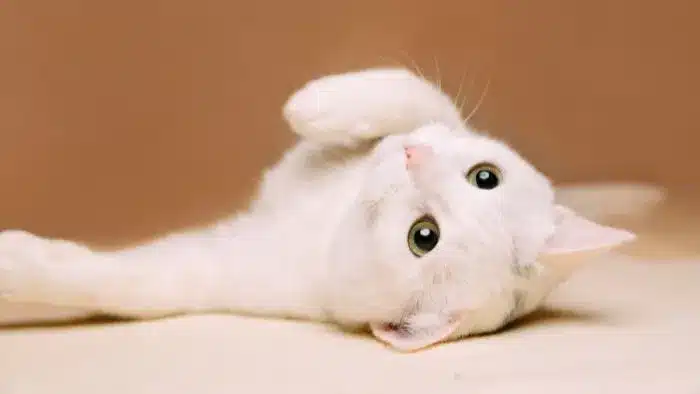Why You Shouldn’t Touch a Cat’s Belly So Easily?

In daily life with cats, we often see them rolling over and showing their soft bellies. While this may appear to be an invitation to pet them, it’s not always the case. Why shouldn’t we touch a cat’s belly when it flips over? Let’s take a closer look.
1. Hidden Danger from Natural Instinct
A cat’s belly is one of its most vulnerable areas. Over time, cats have developed a strong instinct to protect them. When a cat shows its belly, it doesn’t always mean it wants to be touched. In the wild, cats may lie on their backs to appear relaxed while staying ready to defend themselves. Their paws and claws stay alert, and they may suddenly attack if they feel threatened.
Even house cats still keep this instinct. If a cat shows its belly in a new place or front of a stranger, it may just be testing the situation. Touching its belly at this time might make the cat feel unsafe, and it may scratch or bite to protect itself. This can lead to injury to the person.
2. A Mix of Trust and Testing
Belly-up behavior can mean trust, but it can also be a test. When a cat rolls over in front of someone it trusts, it might feel relaxed and close. However, even with trusted owners, cats may simply be testing their limits. Their mood can change quickly, and sometimes they want to stretch or enjoy the moment—not be touched.
If the owner misreads the signal and pets the belly, the cat may feel disturbed or disrespected. This can hurt the bond. For example, a cat lying in the sun showing its belly may want to relax. If the owner touches it, the cat might walk away or act cold afterward.
3. Sensitive Belly, Unpleasant Feeling
A cat’s belly has many nerve endings and is very sensitive. Some cats experience discomfort when touched in that area. Even if the cat trusts you, you must be gentle and careful. Some cats may accept only a light, short touch, while others don’t like belly contact at all.
Touching too hard or for too long may cause stress or make the cat dislike being touched—possibly even on other parts of the body later. For example, short-haired cats may feel more from each touch, and too much can feel itchy or painful to them.
4. Be Careful of Misreading Signals
Many people think a cat showing its belly means it wants to be petted—but that’s not always true. Sometimes, cats rub their bellies on the ground because of an itch. In this case, touching doesn’t help and may even bother them.
Cats also roll over when they’re relaxed or playing, not necessarily asking for touch. We shouldn’t assume belly-up means it’s okay to pet. Instead, we should look at the cat’s full body language, facial expression, sounds, and past behavior. Only by understanding all signs together can we avoid upsetting the cat and keep a good relationship.
Showing the belly is a complex signal, not always a request for petting. As cat owners, we need to learn more about our cats’ habits and respect their personal space and boundaries. This helps keep our cats happy and healthy, allowing us to enjoy our time with them more fully.
